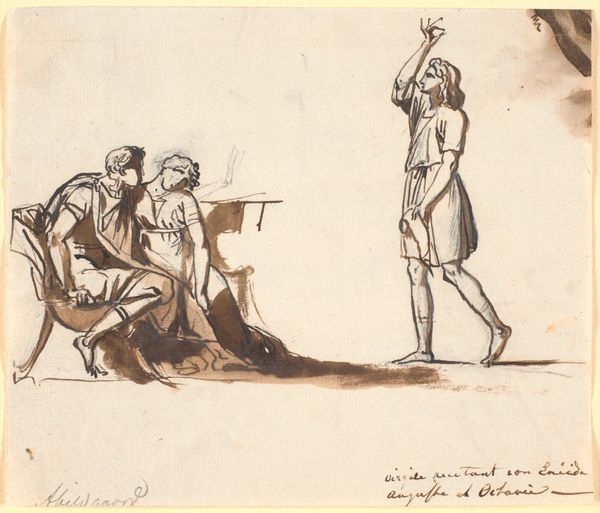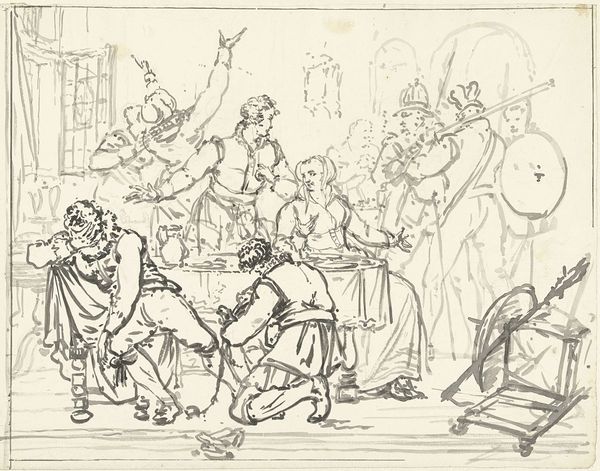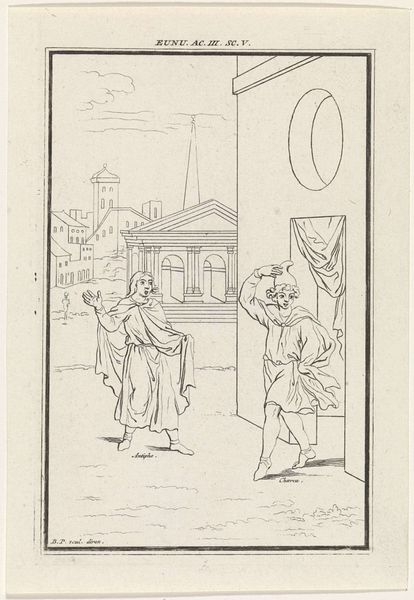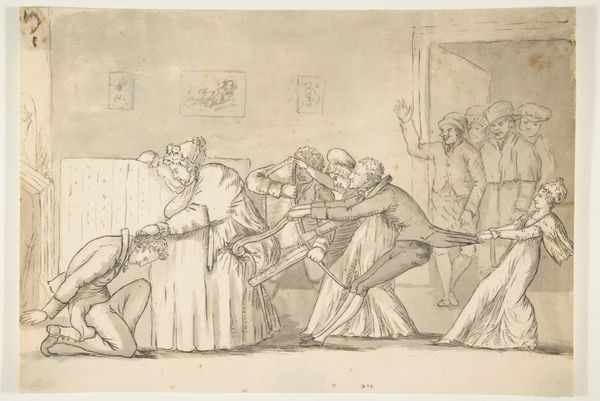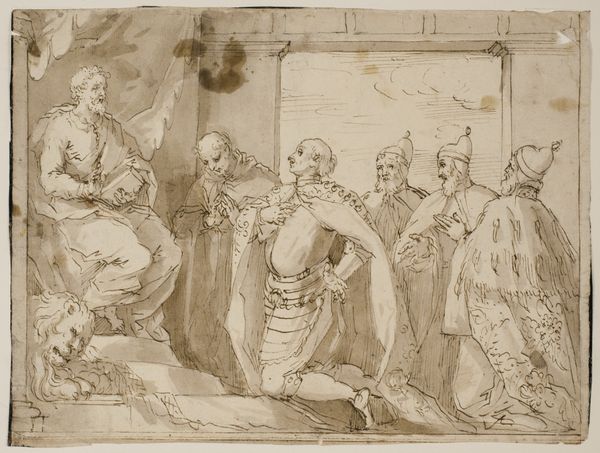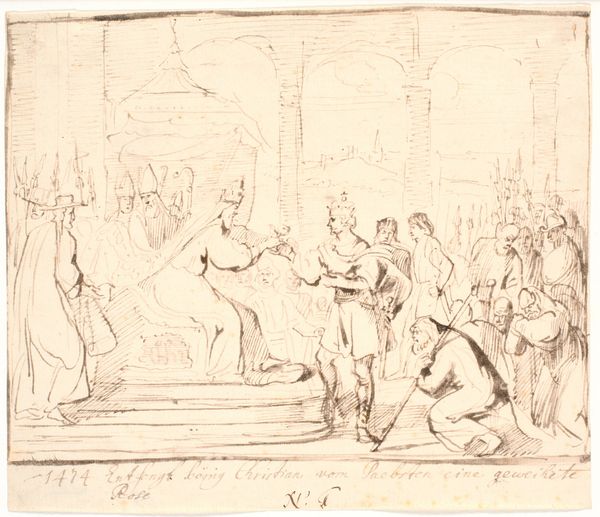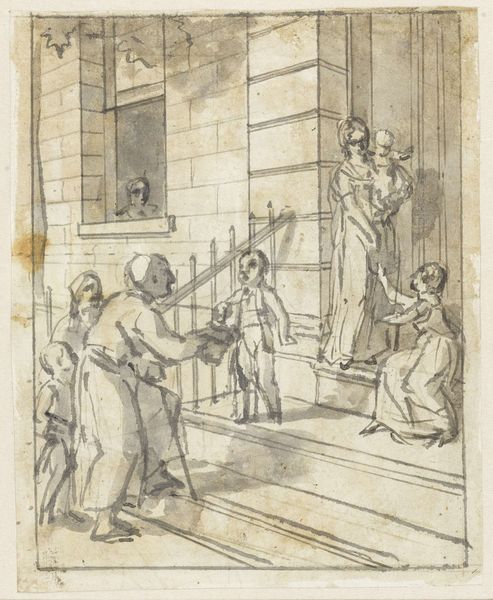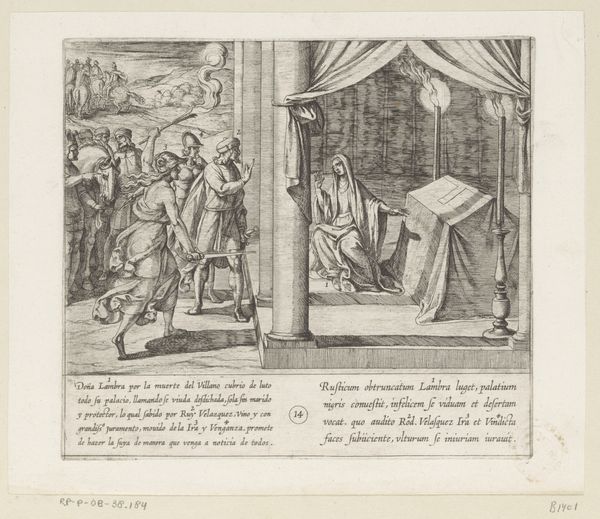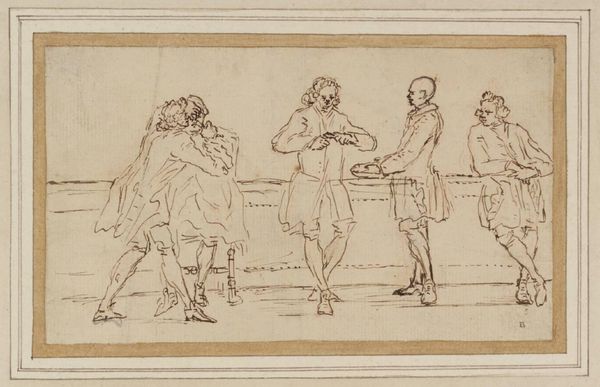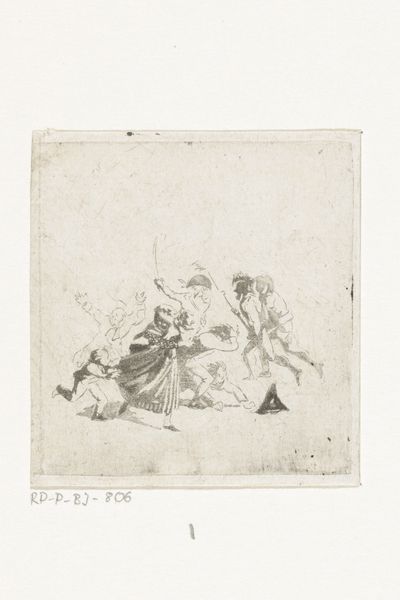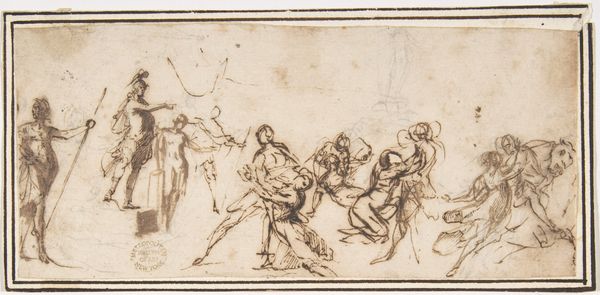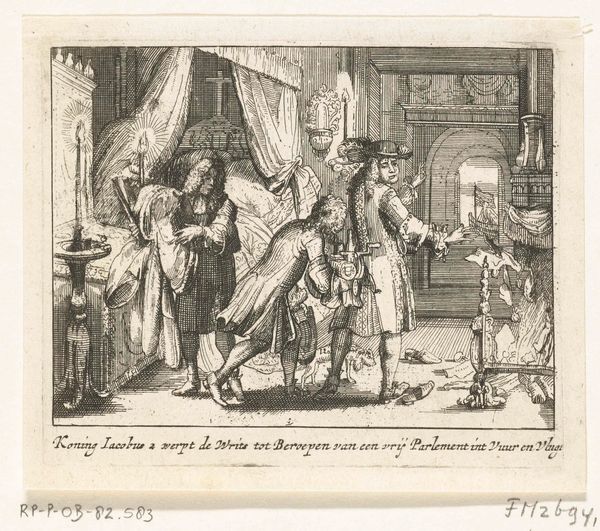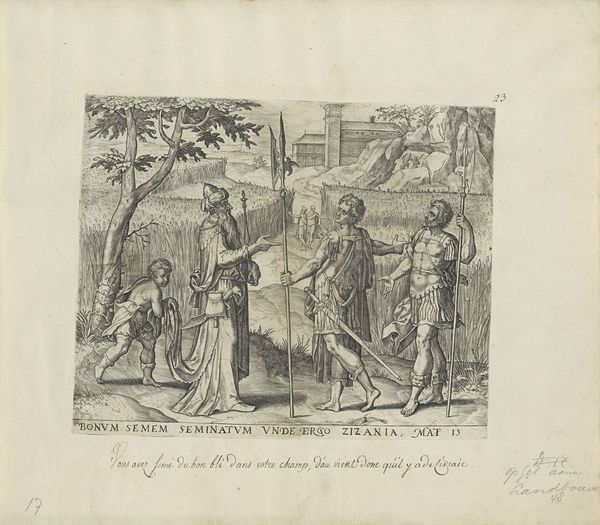
drawing, lithograph, print, etching, paper, ink
#
portrait
#
drawing
#
neoclacissism
#
narrative-art
#
lithograph
# print
#
etching
#
figuration
#
paper
#
ink
#
line
#
history-painting
#
academic-art
Dimensions: height 87 mm, width 114 mm
Copyright: Rijks Museum: Open Domain
Editor: This drawing, “The Oath of the Horatii,” is attributed to Jurriaan Andriessen and thought to be made somewhere between 1752 and 1819. It's made using lithograph, etching, ink, and other print methods on paper. The whole scene seems so tense, almost like a theatrical stage. What do you see in this piece, focusing on its pure visual form? Curator: Precisely. The drama unfolds through stark lines and composition. Note how the artist employs the arches in the background not only to frame, but also to compartmentalize the emotional states. The men on the left, defined by angular poses, contrast dramatically with the curving lines of the figures on the right. Editor: So, the composition itself amplifies the emotional dichotomy within the narrative? The sharp lines convey masculine strength, whereas the curved ones might evoke the figures on the right. Curator: Indeed. Consider the formal properties of line and form. Observe how the artist uses a stark tonal range and a rigid structure, imbuing a scene ripe with conflict. What of the medium, the print work done on paper; does that inform how you respond to this piece? Editor: I do not know for sure. The roughness, incompleteness even, emphasizes how immediate and vital this oath is, even though the setting is highly posed and staged. Would you agree? Curator: An astute observation. This immediate tension speaks to the power inherent within the work's very form, regardless of subject. By analyzing its formal elements – its use of line, the balance between figuration and void, the rhythm created by repeated forms, it allows for an interpretative process without leaning on external historical details. Editor: I’ve never considered formalism quite like this! So focusing solely on composition, color, and line leads to so many avenues of interpreting the artwork without focusing on historical background. Curator: Precisely. Understanding these attributes is fundamental to appreciating art’s capacity to communicate independent of external narratives. Editor: Thanks. I feel I have gained insight to consider art purely based on form, rather than historical context alone.
Comments
No comments
Be the first to comment and join the conversation on the ultimate creative platform.
